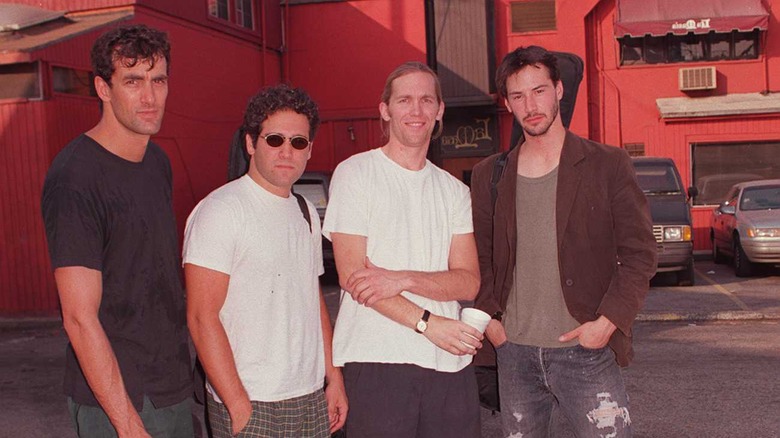The Unexpected Truth About The Bus From Speed
If you've ever seen the movie "Speed," you might know why this film is considered a classic among critics. The basic premise of the movie involves someone strapping the bottom of a metro bus with explosives that would detonate if the speed fell below 50 miles per hour. It had enormous critical and commercial success when it was released in 1994 and ended up being a box office smash, earning more than $300 million worldwide (via The Hollywood Reporter).
The adrenaline-pumping thriller starred Sandra Bullock as Annie Porter, the unlikely heroine who commandeers the runaway bus, and Keanu Reeves as Jack Traven, the young LAPD cop who tries his best to get everyone out of the dangerous predicament. This movie was a life-changer for both Bullock and Reeves, who were still up-and-coming actors, not the megastars they are today.
You may have figured it out by now, but there was also another "hero" that cannot be left out when talking about the film: the fleet that played the unstoppable Santa Monica Bus 2525. According to IMDb, ten buses were used to make the film.
A closer look at the buses used in Speed
The bus played a central role in the film and deserves as much acclaim as the actors. Because the movie is from the 90s, a lot of the stunt scenes were not filmed using CGI technology and instead performed live. AV Club reports that buses were specially modified to be used in their respective scenes. For example, some buses had their windshield removed, other buses were used for shooting high-speed sequences, some were brought in, only to be blown up, and there was a stripped-down bus for the climatic final scene at the end.
Hands down, the biggest stunt was the death-defying jump scene where the passenger-filled bus appears to leap over an unfinished freeway. Fortunately for the actors, no bus jumped over this fictional unfinished bridge in real life. Instead, "Speed" producers hired a stuntman to make the jump off an 8-foot ramp they built on the set. They then used computer technology to stitch together bus footage from different angles of the footage to create the illusion that the bus spent 11 seconds in the air (via AV Club). The first jump didn't go as expected: it flew 109 feet in the air, which was much farther than needed. So, they did the stunt twice to make sure they had the shot.

